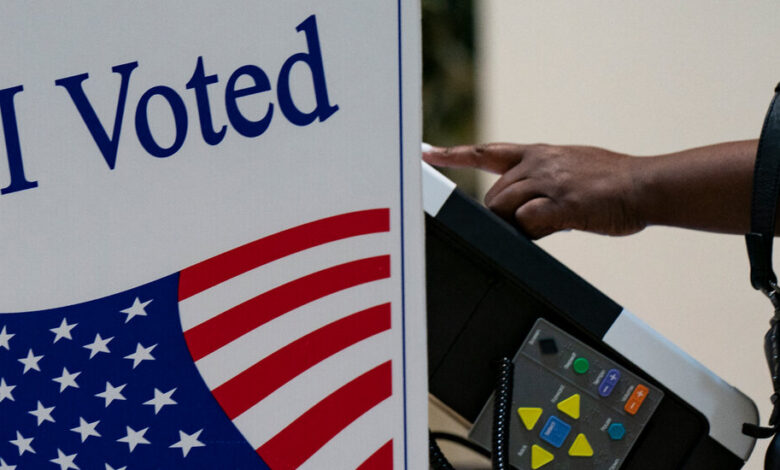Opinion | One Factor Maintaining Democratic Strategists Up at Night time

[ad_1]
The developments in these subgroups present little consolation to the Biden marketing campaign.
Amongst Black voters, Biden led Trump by 55 factors (73-18), far lower than his 83-point margin in 2020. Amongst Hispanics, Biden led by 6 factors (48-42), in contrast with a 24-point benefit in 2020. Amongst 18-to-29-year-olds, Biden led by 8 factors (50-42) in contrast with 24 factors in 2020.
Regardless of the erosion of Black, Hispanic and youth assist since 2020, Biden remained aggressive in Carlson’s knowledge compilation — simply two factors behind Trump (47-45) amongst all respondents. This was doable as a result of Biden made modest positive aspects amongst very giant subgroups: 1.3 factors amongst 2,014 white school graduates, 0.6 factors amongst 2,103 non-college whites, 4 factors amongst 923 voters 50 to 64, 1.8 factors among the many 2,208 65 and over.
In an e-mail, Carlson voiced warning about drawing conclusions primarily based on the aggregated polling knowledge:
We’ve seen zero proof in current election outcomes that younger voters and Black voters are abandoning voting for Democrats, so all of that is hypothesis primarily based on polling. Amongst Latinos the proof is a little more combined, however there’s extra electoral proof from 2020 and a few from 2022 that they might be transferring proper.
Carlson nevertheless, pointed to further polling developments formidable to Democratic prospects.
Gallup reported on Feb. 7 that
in 2020 Black voters self-identified as +66 Democratic, and in 2023 they’re at +47. They discover Hispanics at +12 Democratic now — an all-time low since 2011, however that decline has been extra gradual. They’re additionally seeing a Democratic decline amongst age 18-29 12 months olds (+21 in 2020 to +8 in 2023).
I requested Carlson how he may justify utilizing the phrase realignment to explain what’s been taking place, since realignment suggests a full-scale partisan conversion of the nation or of a significant constituency, as within the 1932-36 realignment that noticed the citizens go from majority Republican to majority Democratic, or the post-civil rights realignment that noticed the white South go from majority Democratic to majority Republican.
Carlson responded:
If what we’re seeing in current polls concerning shifts amongst younger, Black and Latino voters finally ends up taking place in November, in my opinion “realignment” is the proper time period. It gained’t be like 1932 or 1964 the place the events basically swapped coalitions for the New Deal and civil rights, respectively.
Basically it could be a continuation of the developments we noticed in 2020 amongst Latinos, a large however not earth shattering shift amongst Black voters (although even in essentially the most pessimistic assessments Biden will nonetheless win not less than 75 p.c of Black voters), and a shift to roughly even amongst youthful voters from a powerful Dem benefit.
Carlson then added this caveat: “For what it’s value, I’m skeptical that these swings might be this massive as soon as all is claimed and finished in November, however that’s neither provable nor falsifiable till then.”
Data from the Cooperative Election Examine, which conducts surveys of greater than 50,000 voters each election cycle, don’t assist the case for a realignment of any main voting bloc.
[ad_2]
Source link



